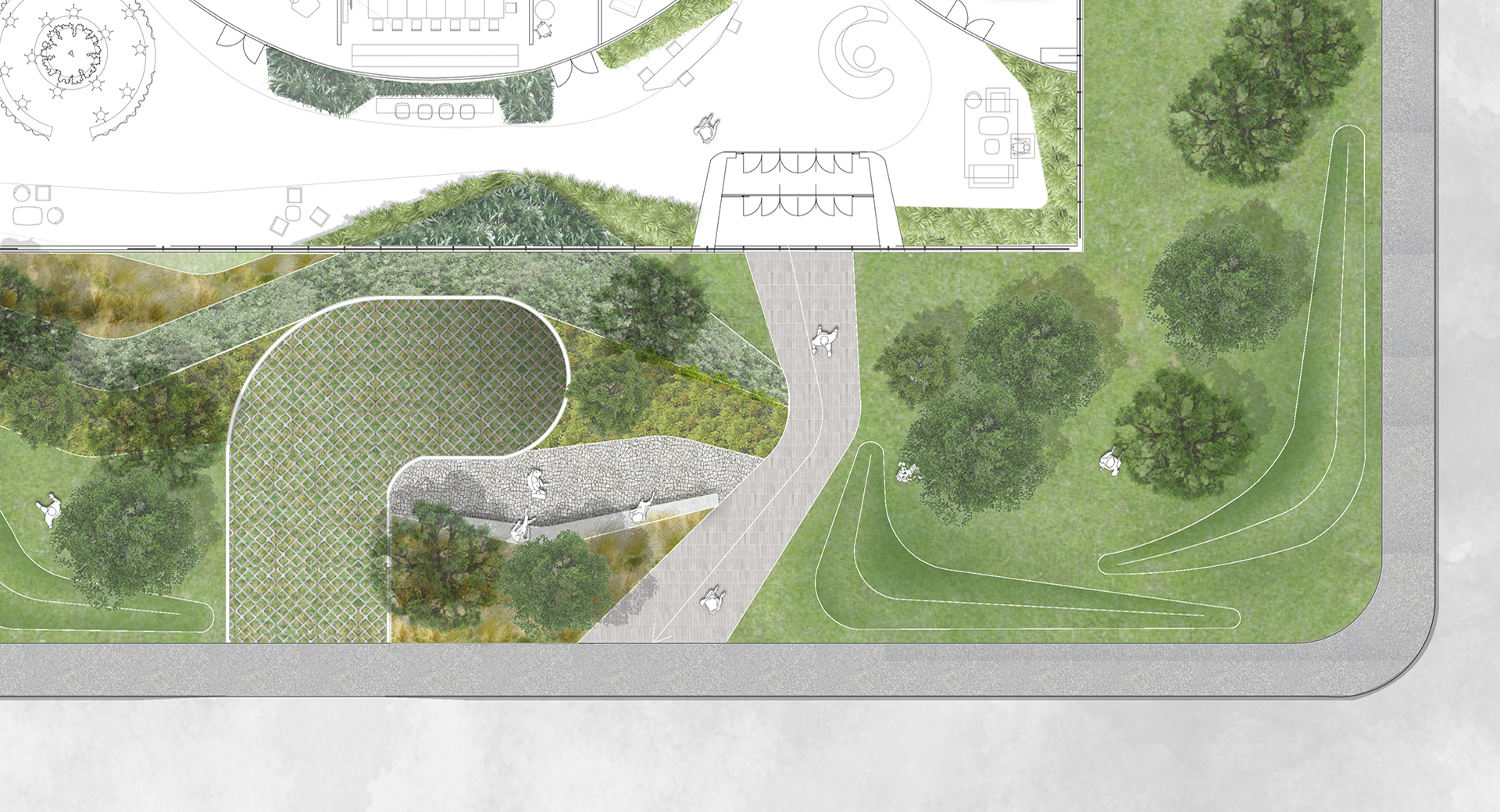Property redevelopment
Rozzano
Type
Location
Rozzano, Milan
Year
2020
Surface area
11000 m2
Client
Private
Head Designer
Arch. Marco Vigo, Ing. Giorgio Piliego
Landscape Designer
Parc’Nouveau
Professional services
Concept
Rozzano
The property upgrading is implemented through specific modular and scalable design options depending on the budget and needs. These design options are clearly identified so that they can be implemented individually by analyzing the buildings according to their problematic issues and potential.
In fact, the Milanofiori project was aimed at a tenant who had not been previously identified. This was significant since it required the development of a series of variables so as not to preclude future possibilities that are being considered today. To date, the buildings are surrounded by a wide green space with trees and by pedestrian streets and driveways that connect the buildings.
Problematic issues of the property:
- Lack of permeability on the ground floor;
- Significant depth of the building;
- Low inter-floor;
- Dated design;
- Building designed according to a mono-tenant and inflexible logic;
- Inefficient system distribution;
- Lack of communal use spaces;
- Poor enhancement of outdoor green space.
Property potential:
- Large surrounding green area;
- Numerous stairwells;
- Large secondary building that is large enough to accommodate amenities;
- Non-binding structural framework;
- Building depth that enables the triple pin;
- Perimeter curtain wall.
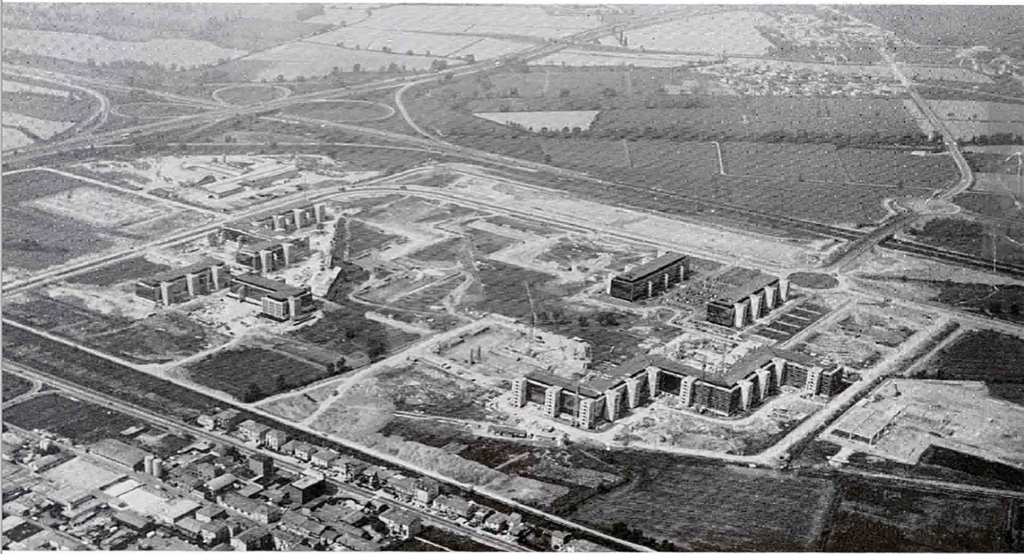
LOCATION AND HISTORICAL CONTEXT
Milanofiori is a building complex designed by the engineer Francesco Clerici for the tertiary sector, strategically located at the intersection between Milan’s West bypass and the Milan-Genoa motorway. Built in different phases after the mid 1970s, the complex consists of several buildings with 6 floors above ground covered with curtain wall and with variable length on multiple stair services which are positioned outside the building. The structural scheme of the buildings, set on a regular grid, is designed to allow a flexible use of the interior space that can be open space or delimited by walls.
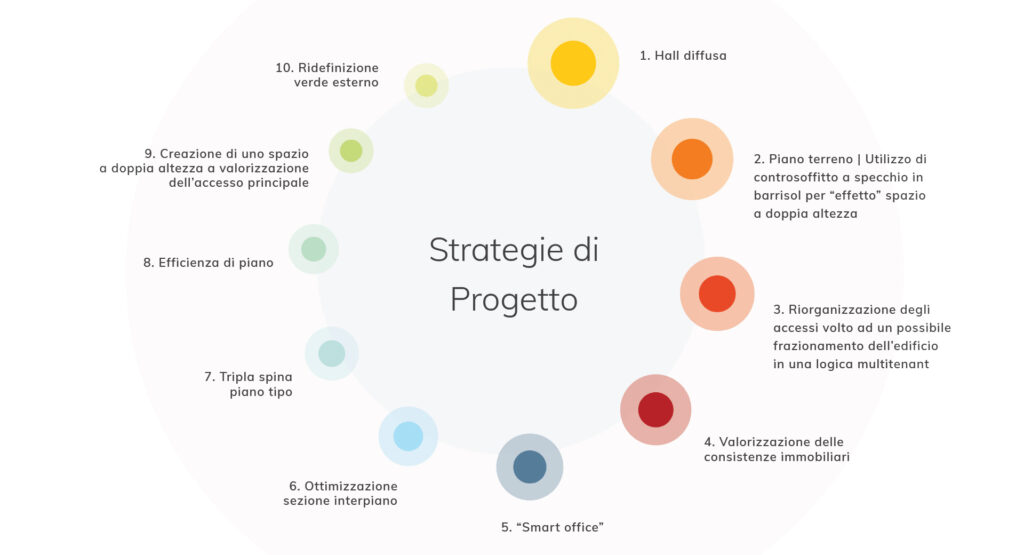
DIFFUSED HALL
The design includes the creation of a “diffused hall”, which allows for better accessibility to the building by multiple tenants. The new hall distributes the communal coworking spaces and generates a spatial single entity where greenery is integrated inside.
The hall features a mirrored Barrisol ceiling that gives the illusion of double height. This solution brings a double improvement: it further amplifies the volume of the hall and at the same time reflects the greenery in a play of refraction.
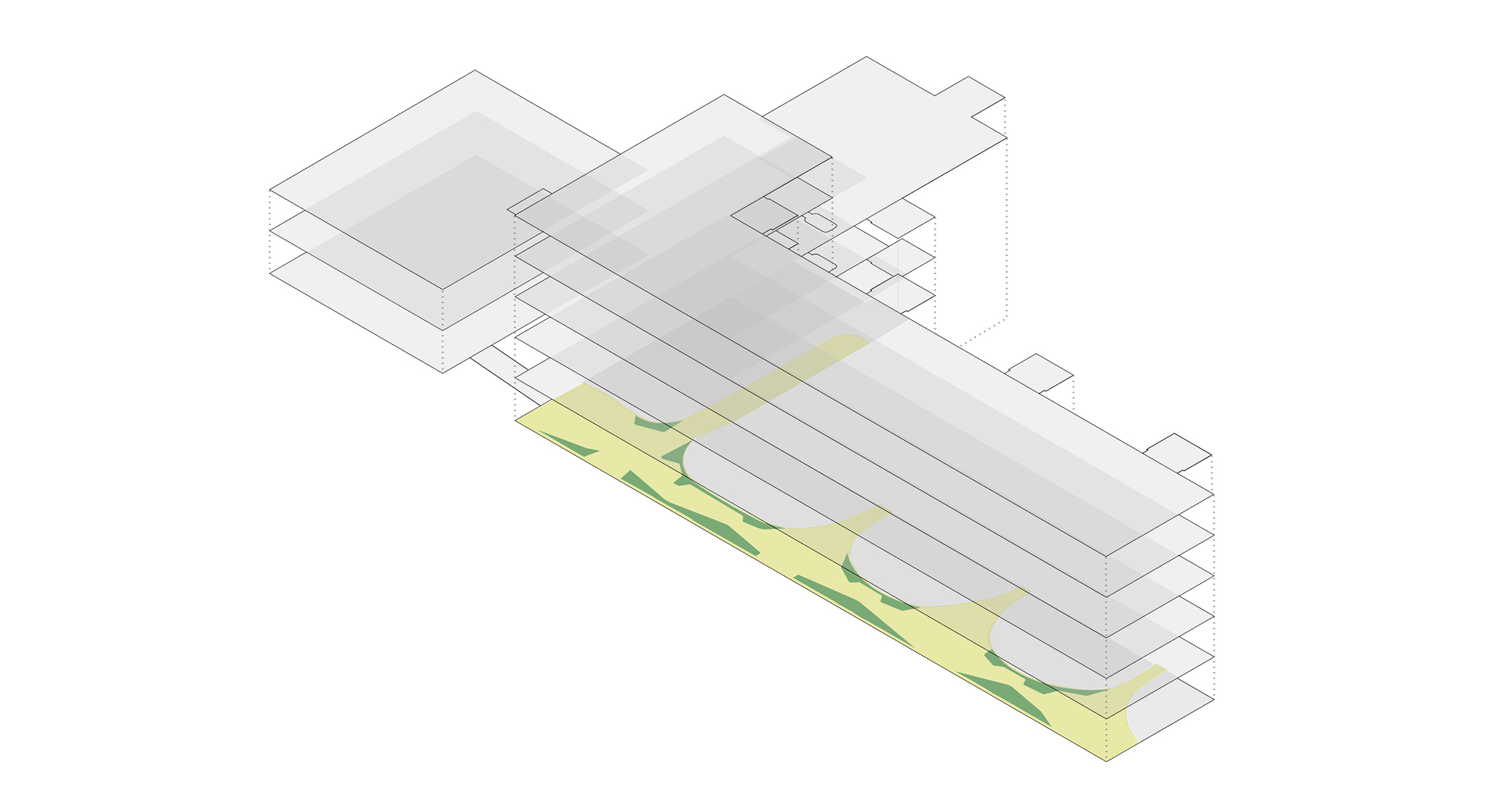
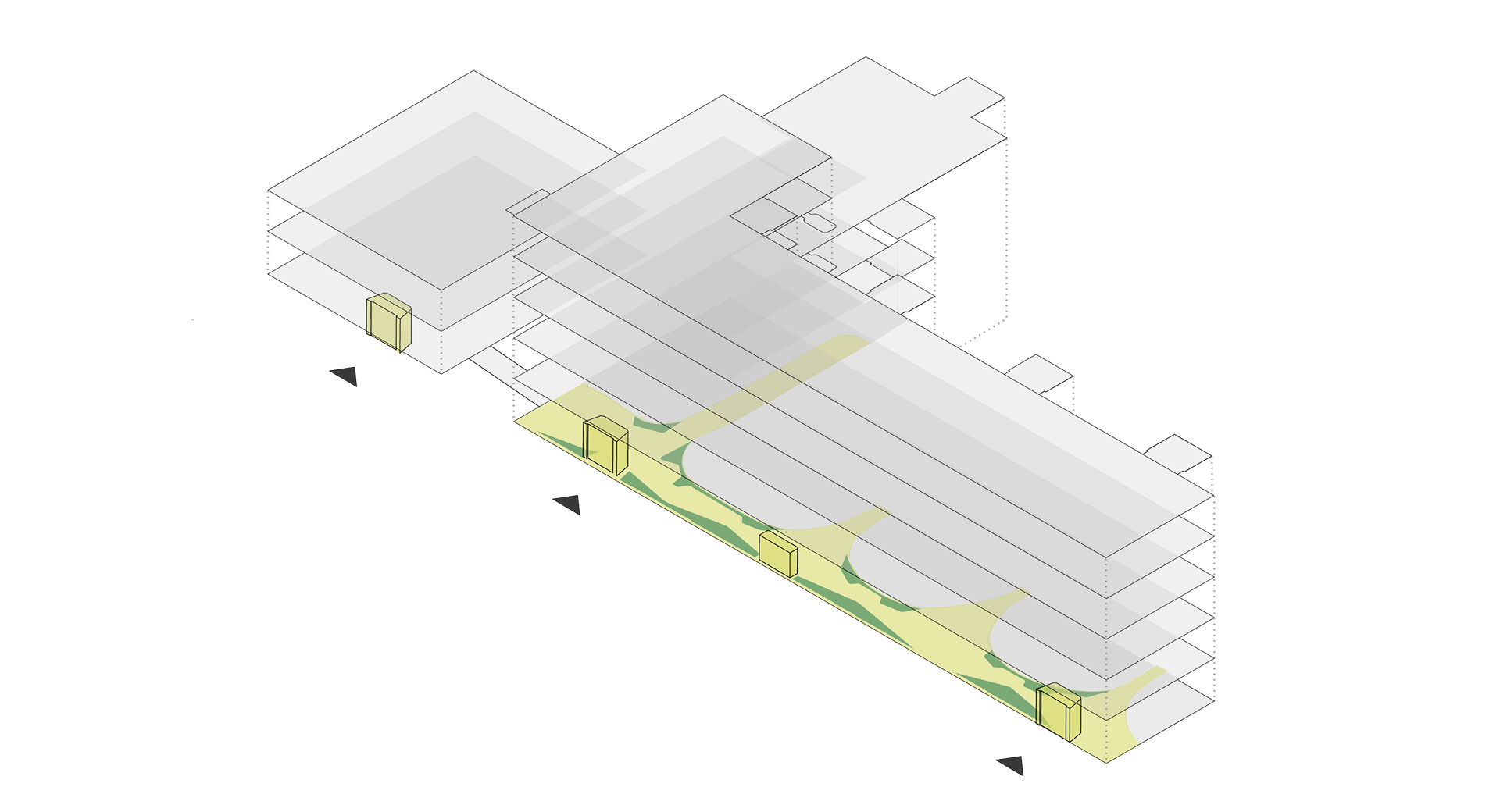
EORGANIZATION OF THE ACCESSES AND REDEVELOPMENT OF THE GROUND FLOOR
The design will optimize transit flows through the creation of new and distinct access points. The second access is planned frontally: in the central portion there will be a driveway entrance for cars; on the two sides new pedestrian accesses will be opened, all connected by the space of the diffused hall.
The redistribution of the access ways to the building is carried out according to a logic that envisages the co-habitation of a multi-tenant: the flows are channelled with a direct access to the stairwells and entrance to the offices will be via electronic badge.
PLITTING UP OF THE BUILDING ACCORDING TO A MULTI-TENANT LOGIC
Review of the horizontal distribution system with multiple possibilities on how to split up the building:
- BI-TENANT
- MULTI-TENANT VERSION A
- MULTI-TENANT VERSION B
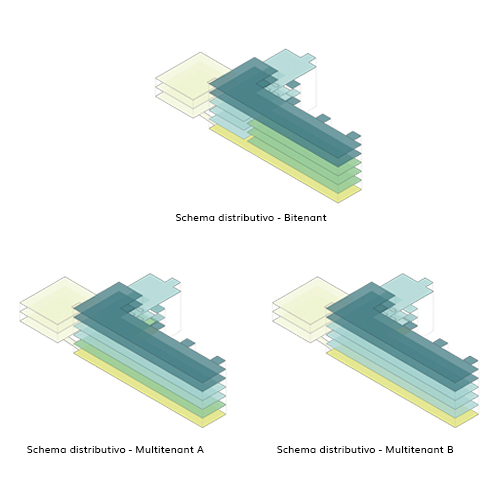
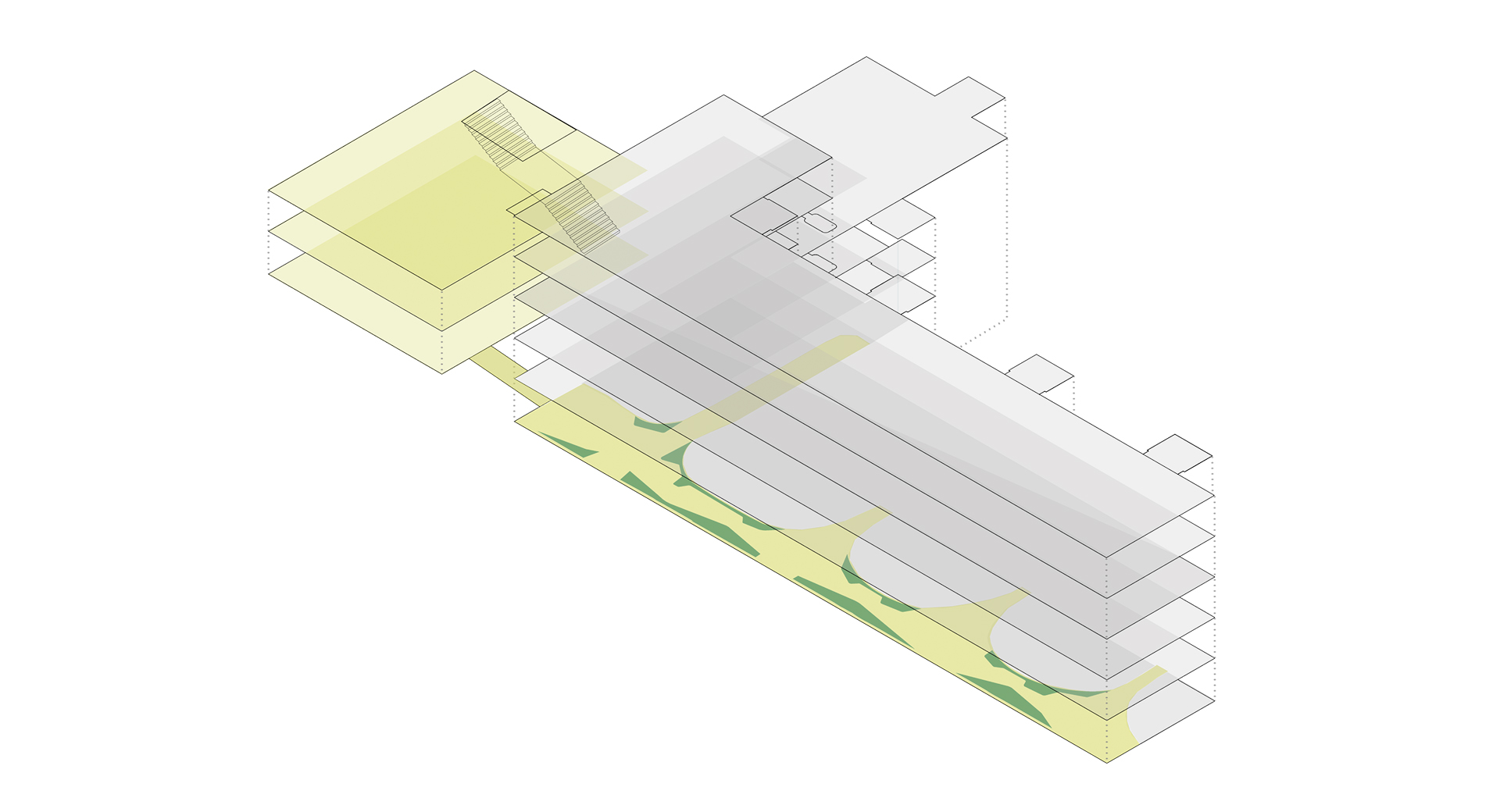
UPGRADING OF THE PROPERTY
The property upgrading is implemented through specific modular and scalable design options depending on the budget and needs. These design options are clearly identified so that they can be implemented individually. Different interventions are possible in the secondary building, such as: re-styling of the canteen space; change of use of the first floor which becomes a gym, co-working space and lounge; flat roof with exercise equipment and co-working space with greenery; inclusion of greenery in the interior spaces.
SMART OFFICE
The workspace is designed from the perspective of the smart office: flexible offices with hybrid spaces adapted to the new working needs, which can be modular and reconfigured.
Hybrid spaces are understood to include: informal meeting areas, phone booths, huddles for meetings and short phone calls, touchdowns, and brainstorming areas. The smart office includes the integration of internet services, such as room reservations, panels with integrated sensors and responsive furniture. This type of technology also makes a new and specific redistribution of workstations possible in response to needs arising from Covid-19.
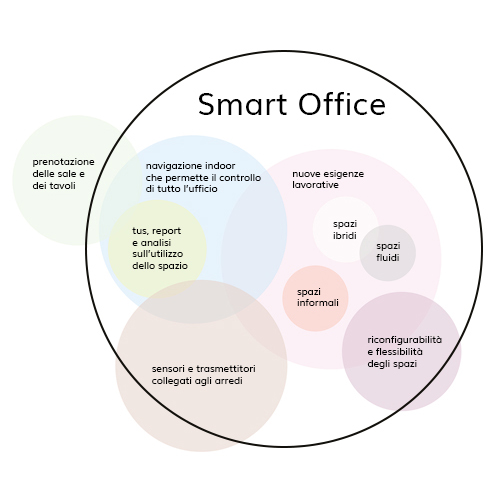
The office spaces have been designed in such a way as to ensure maximum flexibility and reconfigurability. A space that therefore allows for easy modification at no extra cost in the event of a Covid emergency and at the same time maximum efficiency and usability of the available space. From the Covid perspective, therefore, we propose a smart office – physical:
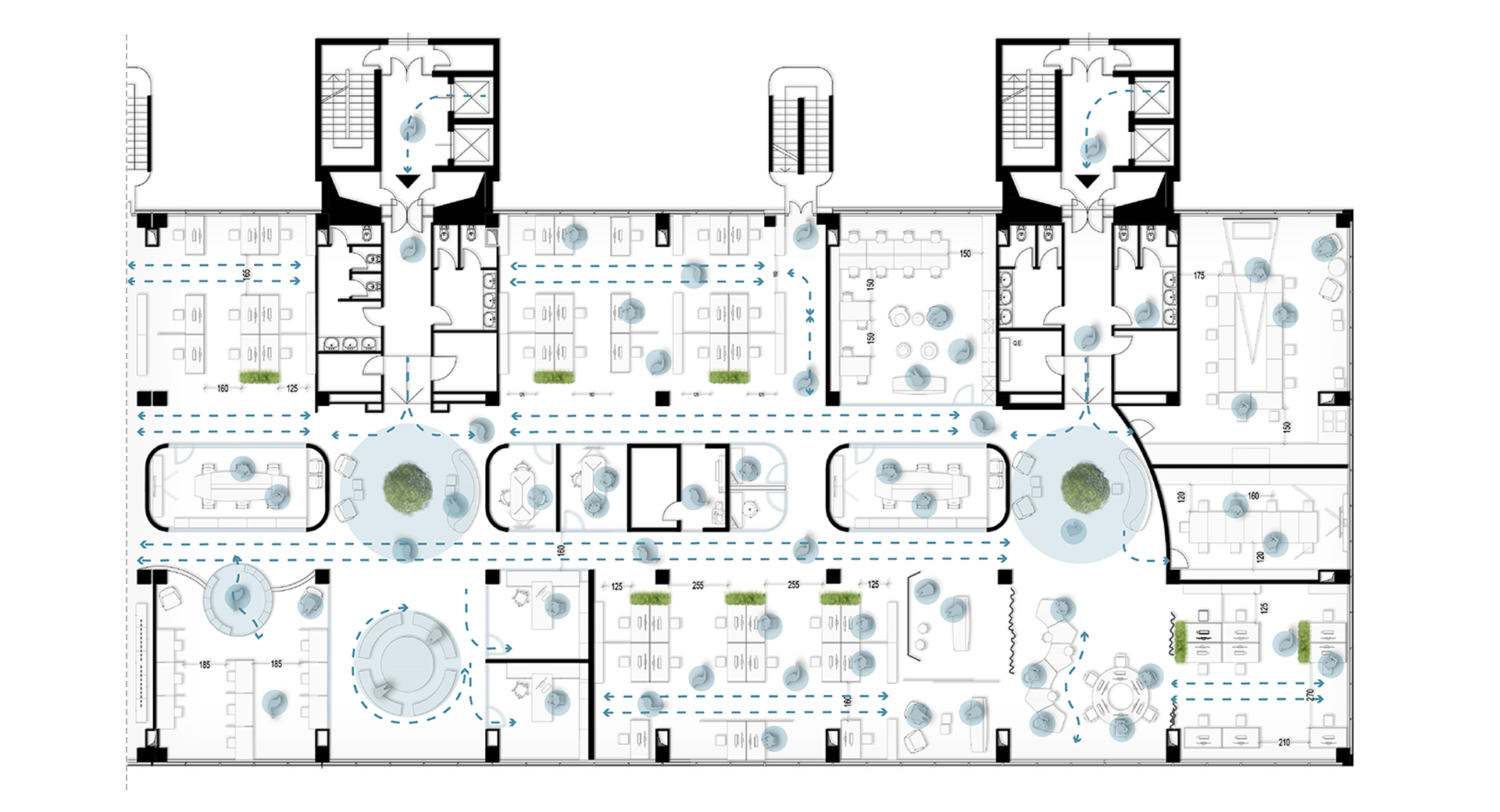
Physical because it is an office on a human scale in which the spaces are calibrated to the new working needs and the different moments of concentration, collaboration or meeting, all accessible through a mobile and app.
Smart because every single element within the office, from the meeting room, to the monitor, to the furniture itself, workstation and locker are equipped with sensors and panels and can be booked via app. All this allows an extreme facilitation in the management of the office and also a control on the efficiency of use of the spaces and a constant monitoring of the number of people present in individual areas and throughout the floor, thus ensuring correct and easy distancing.
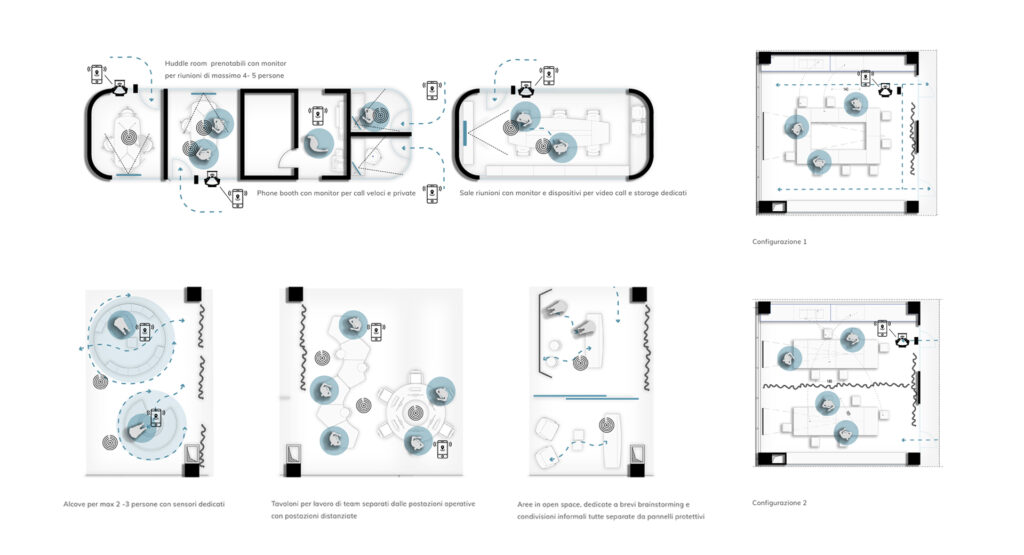
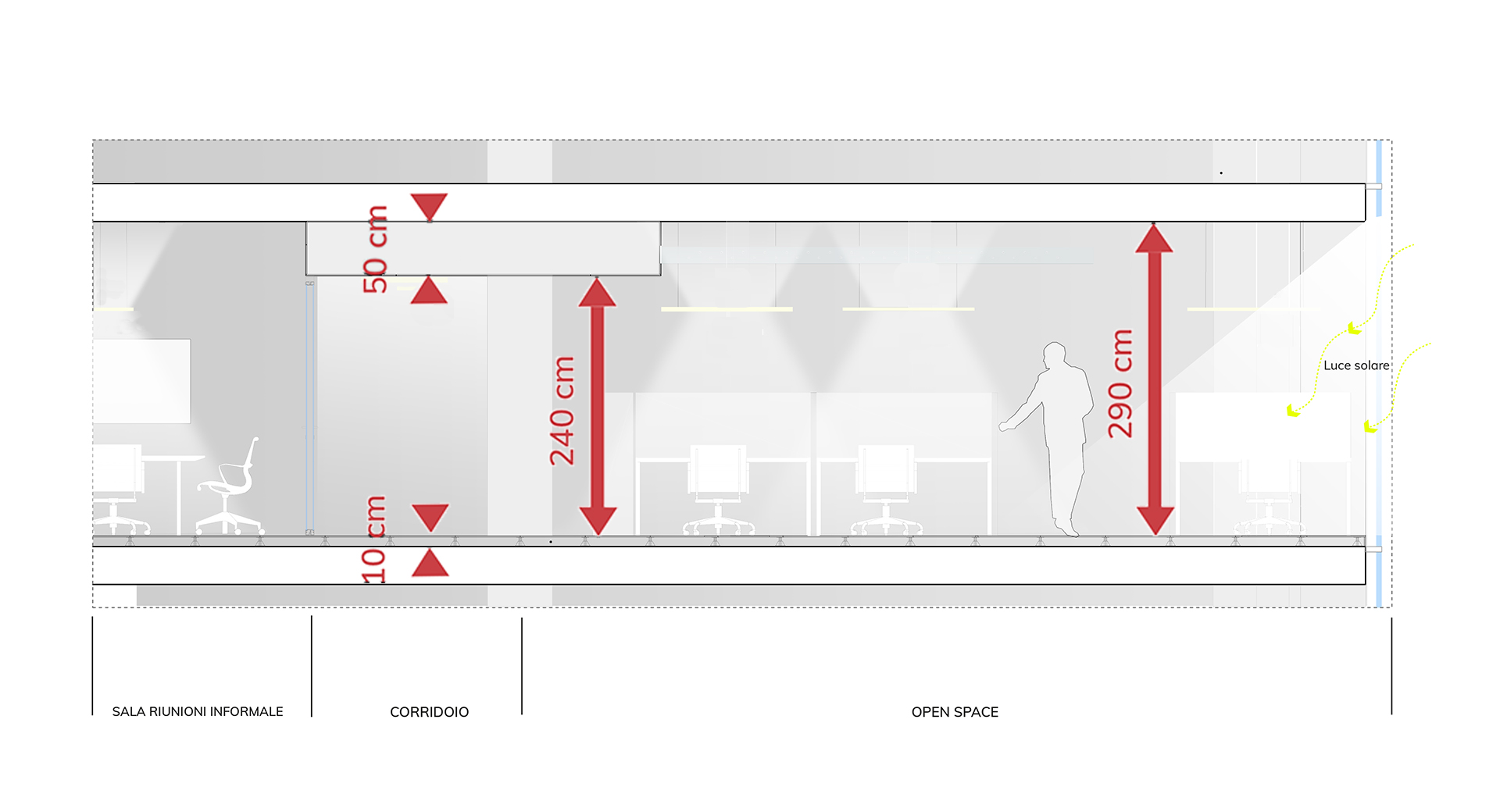
INTER-FLOOR SECTION AND NEW SYSTEM LAYOUT
The inter-floor section is optimized with the construction of false ceilings only in the central blocks of the services; the system ducts run along this portion and are integrated inside the false ceilings. The project will include floating flooring that will allow for better and flexible distribution of the electrical system.
The depth of the building allows the spaces to be partitioned into three blocks: the central portion is characterized by service spaces such as meeting rooms, relaxation areas, copy area and technical rooms; the two side blocks develop the different work area configurations.
FLOOR EFFICIENCY
The distributional layout has been designed following a criterion of maximum space efficiency, such as to obtain an optimized configuration of the number of workstations while ensuring adequate comfort.
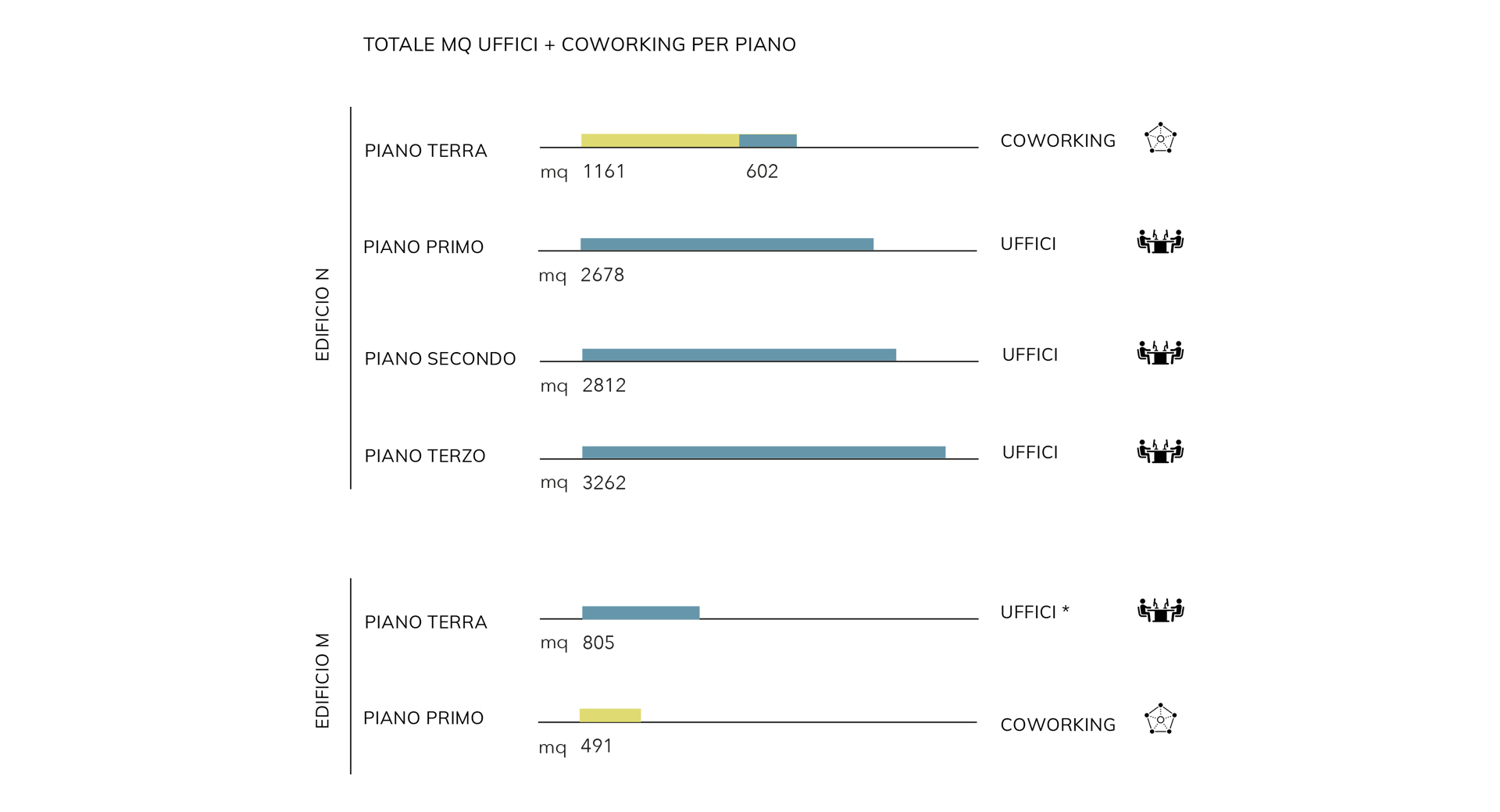
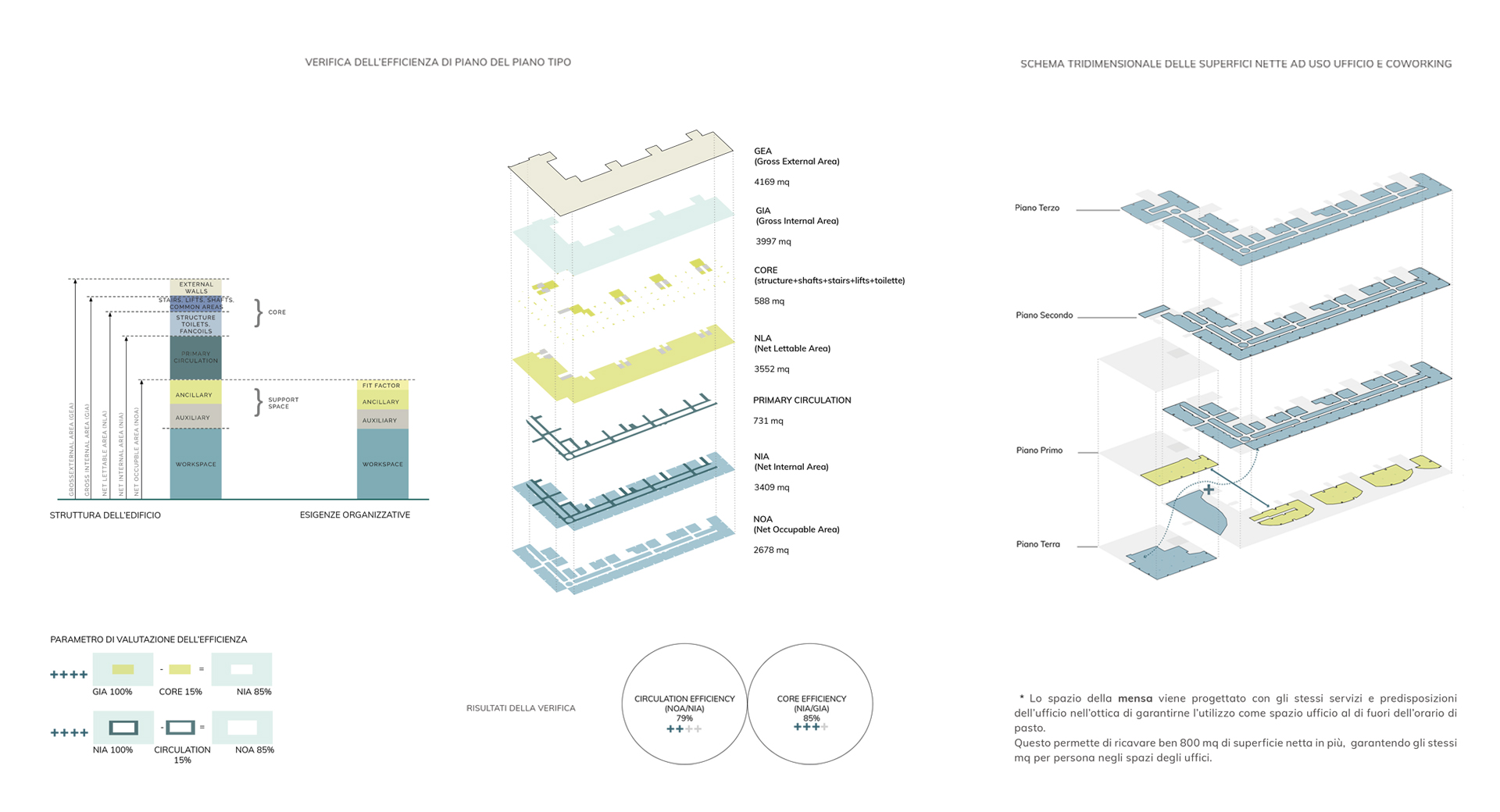
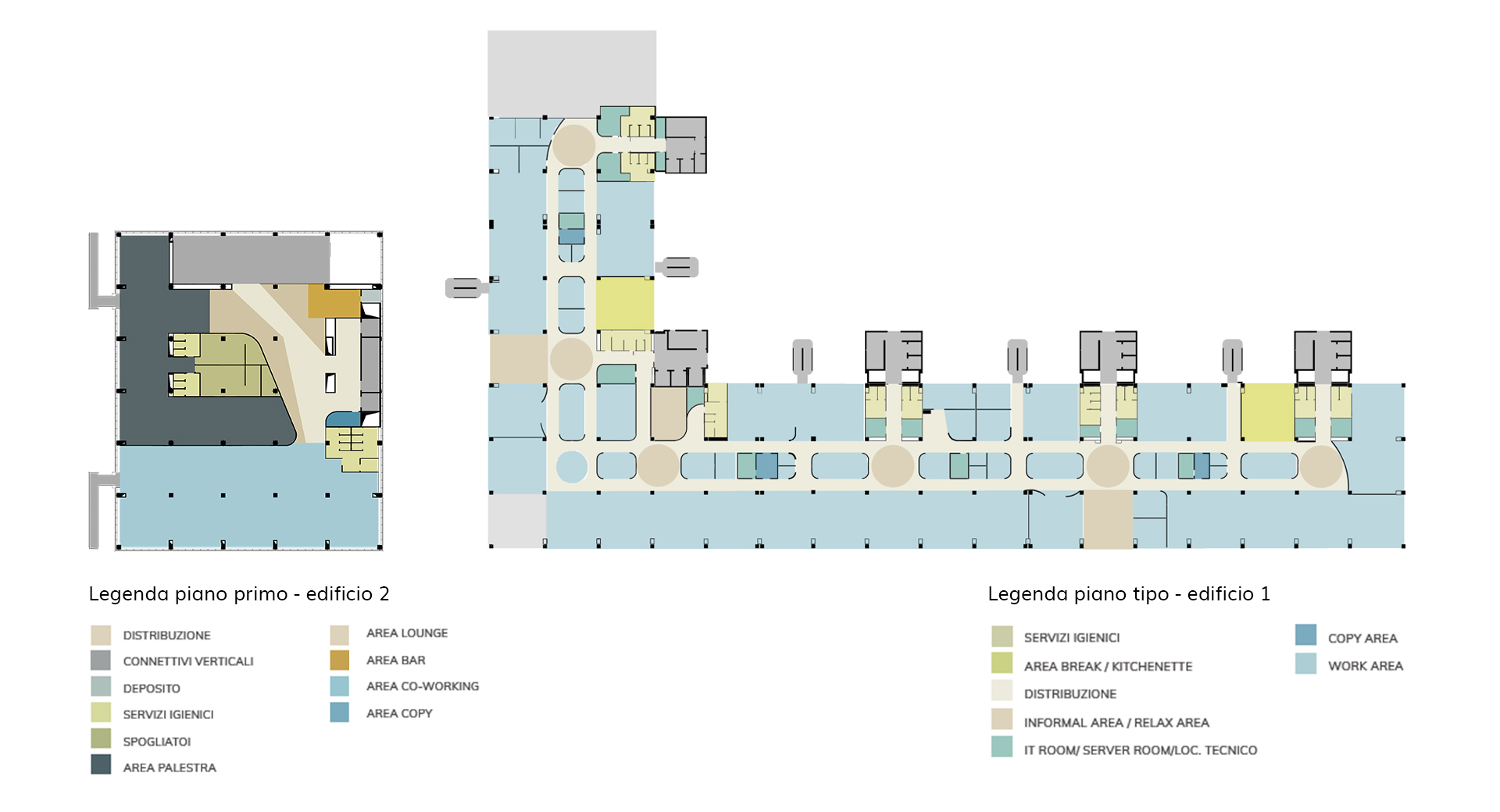
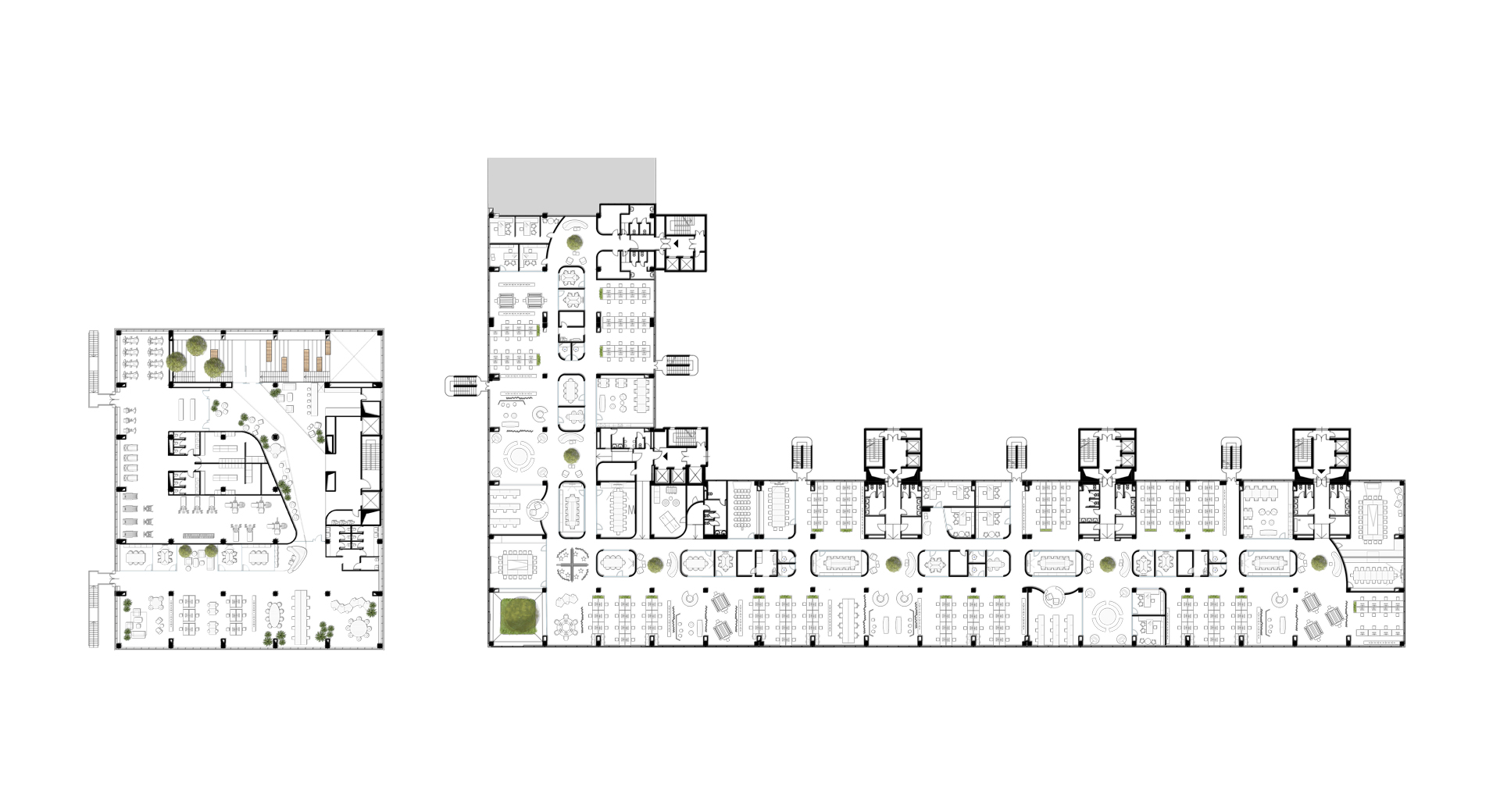
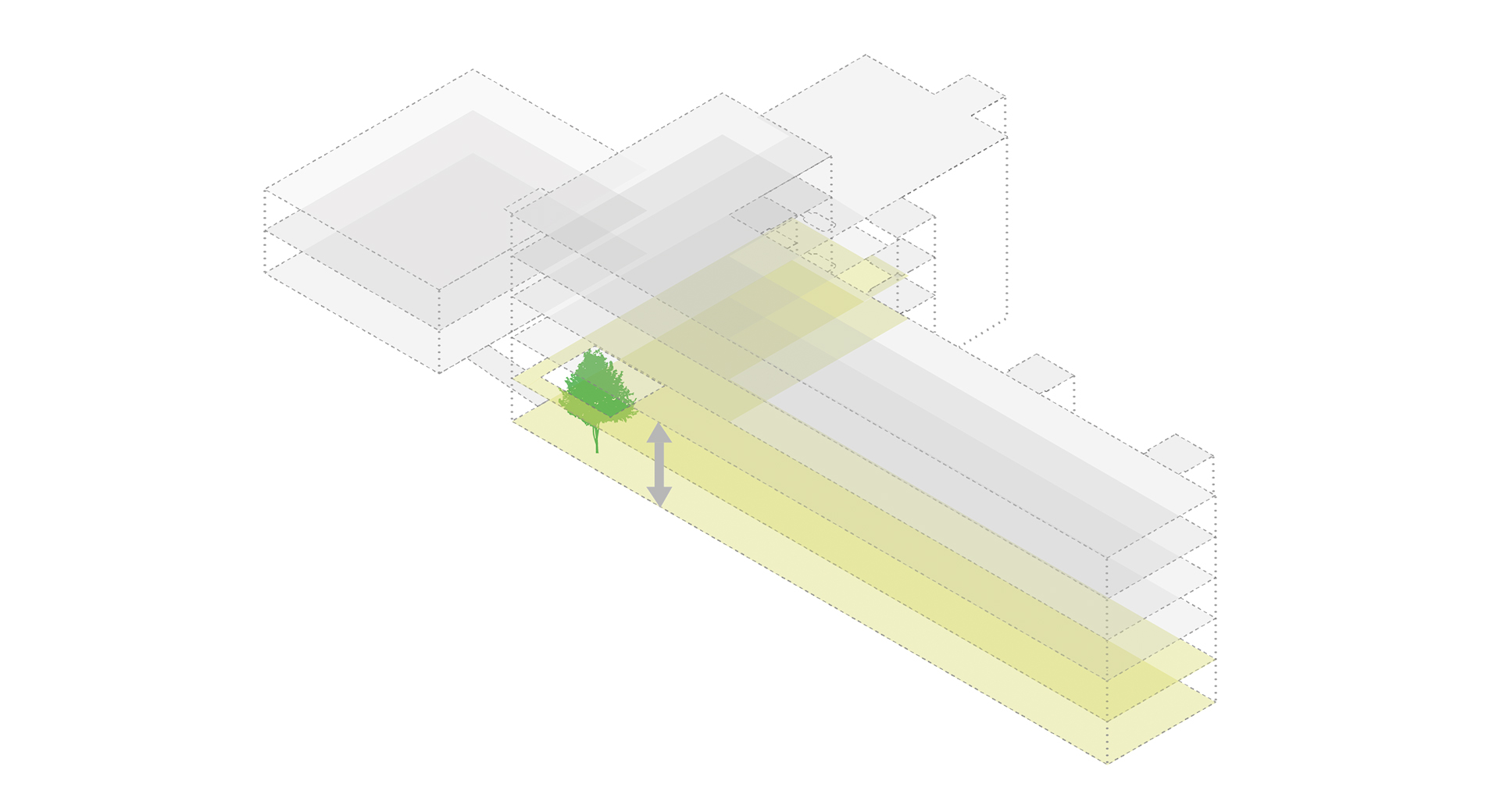
DOUBLE HEIGHTS
The project envisages the creation of a double height between the ground and first floors through a contained opening in the floor that will allow a tree to be installed to enhance the main access.
GREENERY
The landscape design aims to achieve a close connection and relationship between greenery and architecture. Softscape and small sculptural morphologies that are well integrated in the greenery connect the building with the outdoor area. The design of the landscape and its taut curves create more intimate and enclosed areas that give employees the opportunity to work or take a break surrounded by vegetation and trees, a natural environment that positively influences their being by enabling a mindful connection with nature. The landscape and its elements also interact with the architecture, improving its environment and efficiency.
The landscape remodelling allows the creation of renewed ventilation of existing parking spaces placed at a distance of 2.5 metres from the facades of the building in full compliance with current regulations.
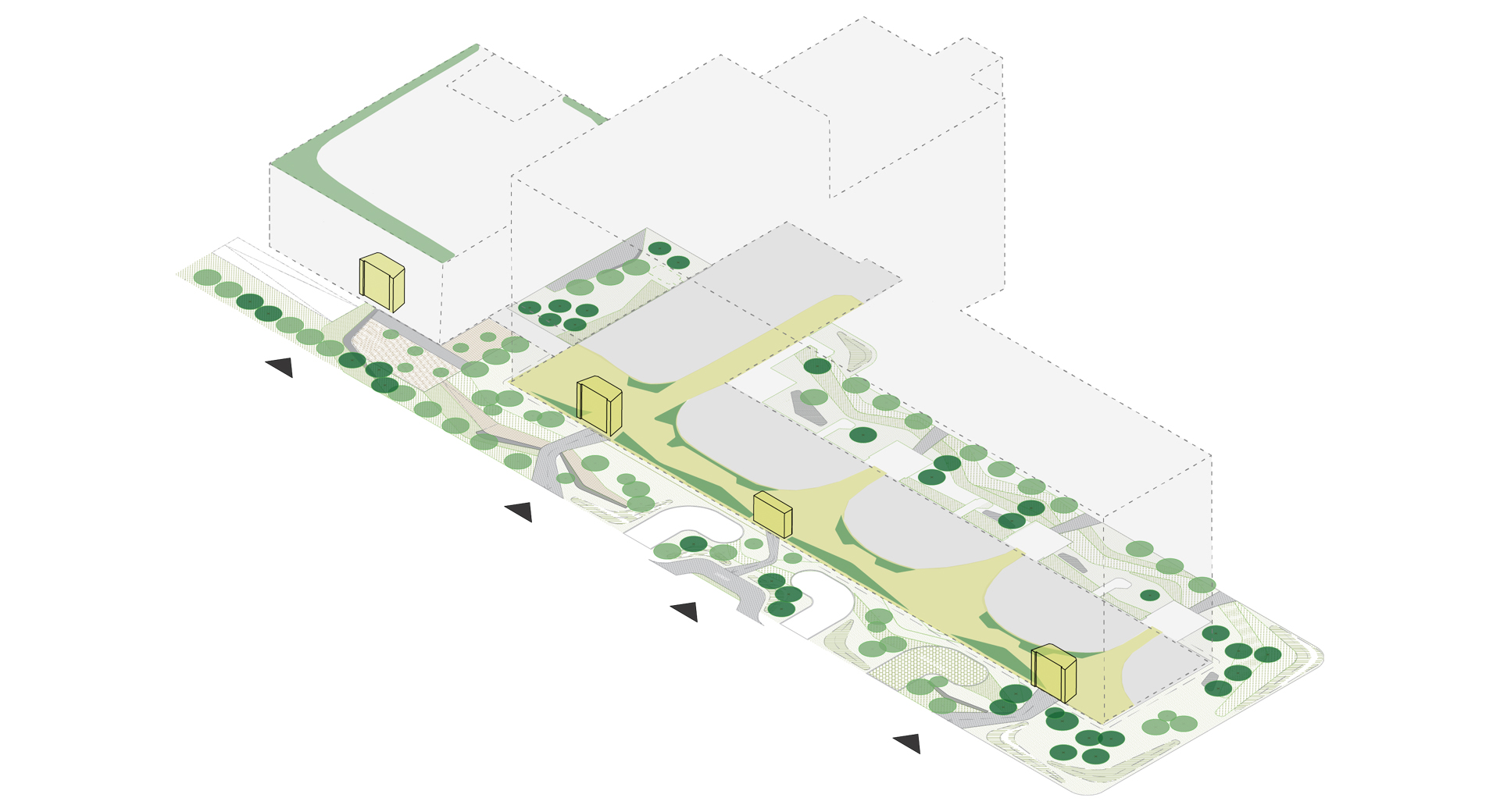
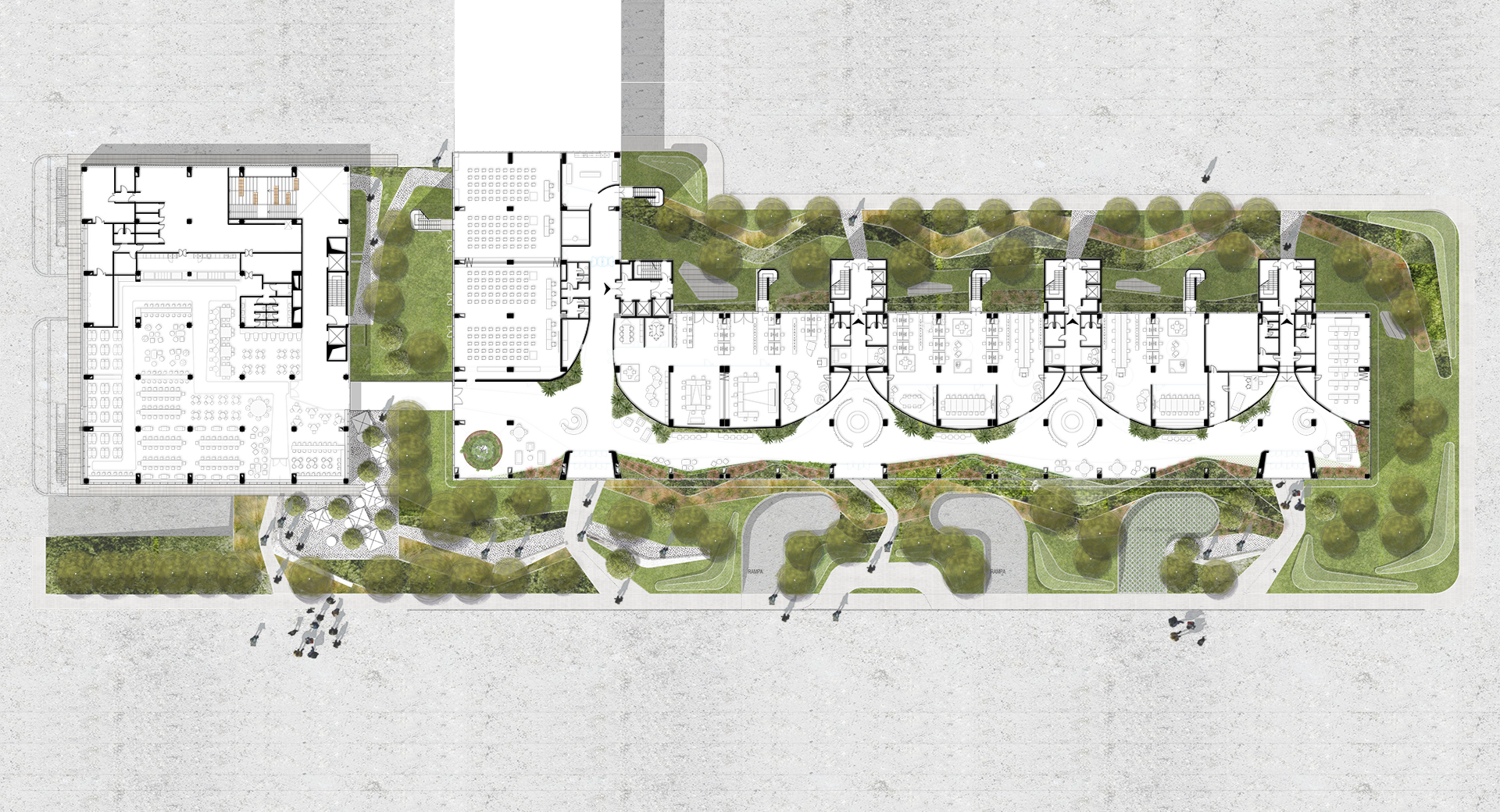
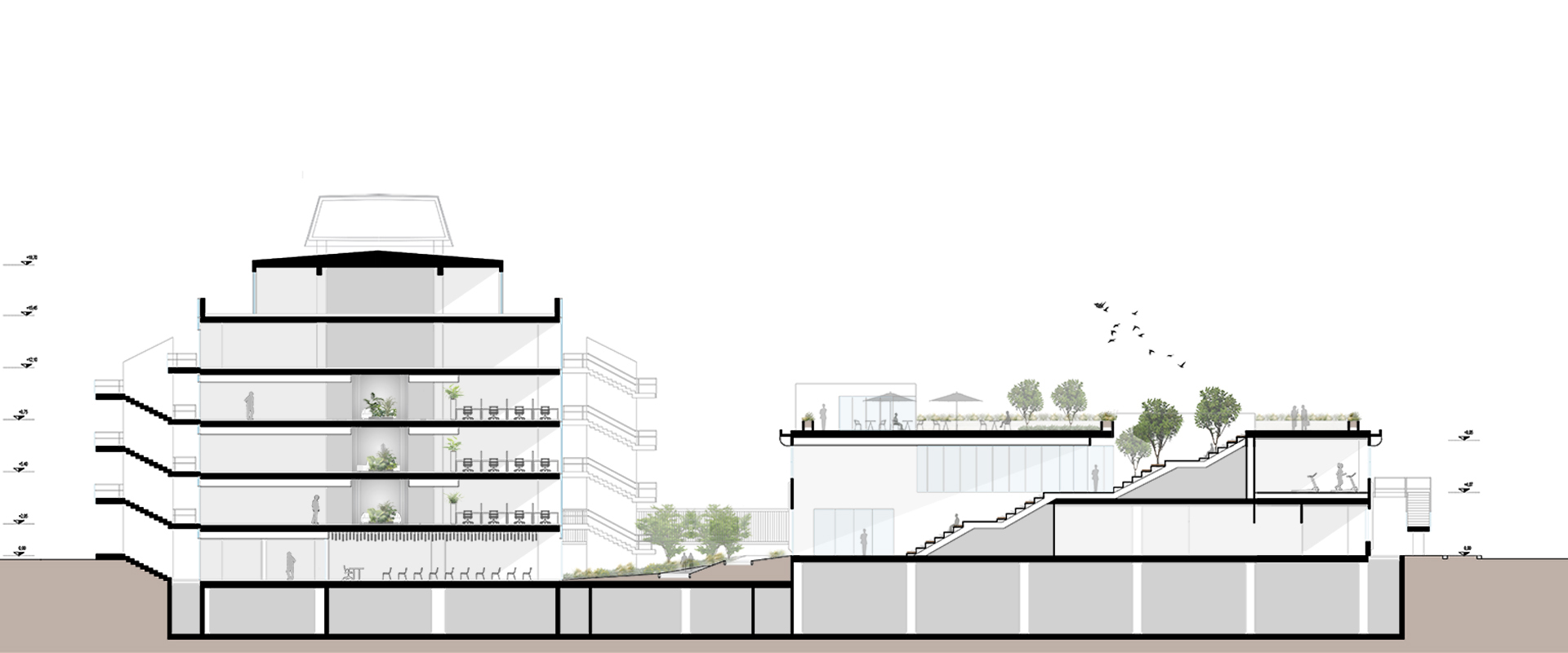
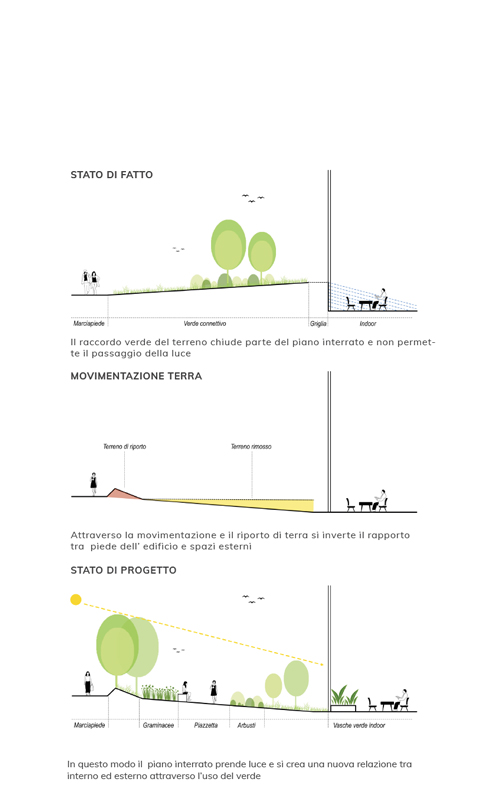
The gesture that generates the building’s new exterior space is to clear the foot of the building and allow natural light to enter the basement, creating a new relationship between the external and internal space. The design of strips of vegetation outside continues inside too, contributing to weaving the close relationship between the two environments. Whereas to regulate the relationship between the road and the greenery, small lawns have been created to create distance between the road and the small squares, making these spaces more protected and sheltered. In order to make the project sustainable, the earth modelling works are carried out using only the soil present on site, therefore with an almost zero balance between excavated and deposited volumes. The strips of shrub vegetation alternate with strips of grasses and portions of lawn, trees dot the entire area creating pleasant shady areas near the small mineral squares. A monolithic and sculptural seat that recalls the forms of the landscape embraces the intimate space of the squares that face the building’s facade.
